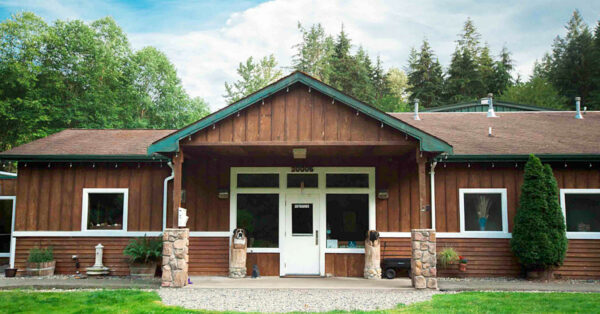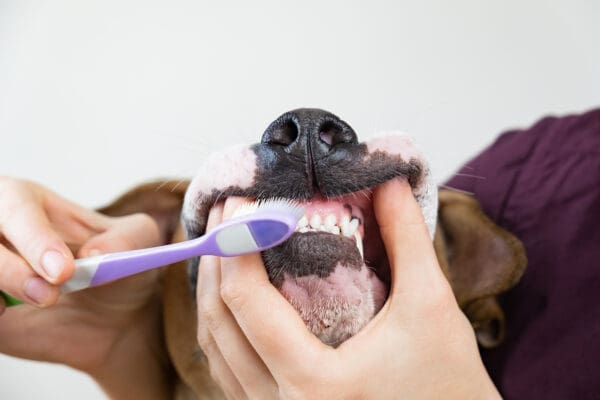
11401 NE 195th St. Bothell, WA 98011
(425) 486-9000 PHONE (425) 486-9002 fax
Introduction: Commonly known as the African spurred, furrowed, or Sulcata tortoise, Geochelone sulcata originates in the Sahel region of Africa, along the southern edge of the Sahara Desert. This 500km wide strip includes parts of Ethiopia, Chad, Niger, Mali, southern Mauritania and Senegal.
The native habitat of G. sulcata consists of arid dry savannah and semi-desert areas. They rely on moisture in food to meet their needs, and conserve water by several methods. These tortoises have thick skin to limit moisture loss, they expel very little liquid urine, and they dig burrows (avg. 30’’ depth) to escape the hottest, driest part of the day. G. sulcata is the world’s third largest land chelonian, surpassed only by the Galapagos and Aldabra tortoises. Adults will frequently exceed 60 cm (24″) in length, and can weigh 68 kg (150 Ibs) or more. They reach full size in 10 – 15 years.
Selection: The majority of sulcatas being sold in pet stores are captive bred. The tortoise should be active, alert, and eating very well. The eyes should be bright and clear, without any discharge, the shell should feel firm (not soft), and there shouldn’t be any staining or discharge from the vent. Check for any discharge from the nose or mouth, and listen for any gurgling or whistling when the tortoise breathes, all indicating possible respiratory problems.
Sexing: Males are generally larger, have longer, thicker tails than females, as well as a more concave plastron and reach sexual maturity at 35 cm (14″ – 15″). Females reach sexual maturity at 45 cm (17″ – 18″), have a shorter tail, and a wider, rounder anal notch. Both sexes have large gular projections (forked protrusions under the neck on bottom of the shell), but the males, tend to be larger and more flared.
Housing: Geochelone sulcata should have a clean, dry enclosure with access to food and water, full-spectrum lighting, warm and cool areas, (allowing for thermoregulation), a simulated (or real) burrow or hide-box, and protection from predators or other hazards. A six-inch juvenile will be easier to house than a two-foot adult, but has the same general needs.
A juvenile tortoise can be easily housed in a large plastic tub or similar containers, and as it grows (rapidly), can be moved to a “tortoise table” which is an enclosure with low sides built of wood and plastic (further described on the housing section of the African spurred tortoise care sheet at www.chelonian.org) or “tortoise room” as size dictates. The best place for an African spurred tortoise is an outside pen (with a sturdy solid surface fence) to allow exposure to sunlight and more natural foraging and digging behaviors. This can be done on a temporary basis when daily conditions permit in colder climates, or more permanently in warmer areas. Physical damage to the tortoise and the fence will occur if the fencing used is a broken surface such as a chain link or lattice. Wherever you house them, specific conditions must be met to maintain health as described below.
Generally, sulcatas prefer a temperature range of 20 – 32°C (70 – 90°F). During the day, there should be a basking area 29 – 35°C (85 – 95°F), and a cool area 18 – 24°C (65 —75°F) to allow the animals to regulate their preferred temperature. Recommended day length is 12 hours. Nighttime temperatures may drop to 16°C (60°F) but ideally should be kept around 20°C (70°F). Remember that although they can survive lower temperatures, it stresses the animals, and contributes to health problems. Heat provided by radiant sources such as heatlamps or ceramic emitters more accurately simulate solar warming during basking than under-tank heaters and “hot rocks” (which are more likely to burn animals when used as a heat source). Temperatures should be monitored regularly (with thermometers), as over-heating can lead to dehydration, and cold will favor respiratory disease and poor digestive function. Geochelone sulcata does NOT hibernate. This tortoise is active all year although it may go through periods of winter cooling and summer estivation (summer hibernation when an animal sleeps to get away from heat, no water, or the food source disappears).
Provide full-spectrum lighting, including both UVA (stimulates natural behavior) and UVB (production of vitamin D). Natural sunlight is best, and an animal that spends some time outside will probably get enough ultraviolet exposure, but indoor animals need supplemental lighting. Most glass and plastic block ultraviolet light however, some products allow for penetration of UV light. These can be used in greenhouse application or for skylights and windows. Full spectrum lights should be within about 30— 45cm (12— 18″) of the animals to provide enough intensity. The self-ballasted mercury vapor lamps provide heat, UVA, and UVB and depending on bulb wattage, should be placed from 30 cm to 1.2 m (1 —4 ft) from basking site (Active UVHeat bulbs distributed by Wild Inside Box 228 Mina, NV, T-Rex Products Inc., 1124 Bay Blvd Suite A, Chula Vista, CA and Zoo Med Laboratories, Inc., 3100 McMillan Rd, San Luis Obispo, CA).
Although they are adapted to arid conditions, these tortoises do need some moisture to avoid dehydration. In the wild they live in burrows, which tend to be cooler and more humid than the above ground air. An occasional (one to two times per week) warm-water soak (five to ten minutes) is a good way to provide extra moisture. A shallow container filled with enough warm water to cover the plastron will allow the tortoise to gain any needed water by drinking or by absorbing it through the vent into the bladder or colon. It will also stimulate urination and defecation. Outdoor tortoises can be given access to a shallow pool or dish of water (keep it clean), or an occasional “rain” from the hose when the weather is warm.
A “burrow” can be as simple as a cardboard box, a small wastebasket, or other structure that the tortoise can get in or under. It should be dark and semi-enclosed, offering the animal a place to feel secure. The burrow temperature should be about 21 – 23°C (70 – 75°F) to support digestion. In larger tortoises housed outdoors, a plastic doghouse makes for a good hide shelter, and also can be easily cleaned or moved as needed. The best outdoor situation would be to allow the tortoise to dig its own burrow. Burrows should be in an area that will not flood during heavy rain and should be monitored regularly for structural integrity as cave-ins could trap tortoises. Fencing of the enclosure should be sturdy, solid, and recessed into the ground at least 60 cm (2 ft).
For indoor tortoises, a wide range of materials can be used for substrate, from simple newspaper, to hay, sand, or commercially available pelleted substrates. The main concerns with a particular substrate are that it be kept clean, and that it should be non-obstructing if ingested. Most reptiles eat bedding, whether by accident or intentionally. Items like pebbles, tree-bark, crushed walnut shells, corncob, or silica-sand can be problematic because of the potential to form obstructions of the gastro-intestinal tract that may require surgical correction. Similarly, any foreign objects in their enclosures are likely to be ingested if possible, so any small objects should be kept clear.
Sulcatas are very big, very strong, and very persistent. Enclosures need to be sturdy enough to withstand constant and repeated assault by a single-minded tortoise that has decided that a wall or fence is not going to keep it from traveling in a particular direction. They will wear grooves in the floor with their claws, dent the walls with their shells, and dig in the least convenient places. However, if one is equipped to take care of a sulcata, it will make a long-lived, interesting and rewarding reptile pet.
Diet: Like most grassland tortoises, the African spurred tortoise is a vegetarian, subsisting in the wild on a variety of grasses, succulent plants, blossoms and occasionally fruits. The actual native diet is difficult to replicate in captivity, but G. sulcata seems to do quite well with a variety of grasses and hay (timothy, Bermuda, buffalo, fescue), Opuntia cactus (prickly pear), alfalfa, clovers, mulberry leaves, grape leaves, leafy green vegetables (romaine, collards, endive, dandelions, mustard), and occasionally fruits. The best way for tortoises to get their required fiber is by grazing, as they would in the wild. Most grasses and clover will supply an adequate base for the diet, as long as the tortoise grazes in an area free of pesticides, herbicides, and fertilizers. Spinach, kale, rhubarb leaves, collard and mustard greens should be fed in limited amounts. A list of toxic plants can be found at ww.chelonia.org/Articles/plantsthatposion.htm. A few of the more common ones are foxglove, mistletoe, oleander, poinsettia, rhododendron, and yews.
Preventative Health Care and Diseases: Before purchasing your tortoise, do as much research as possible on its potential needs and to make sure this is a pet that will be suited for you and the area you live in. A qualified reptile veterinarian should perform a health exam shortly after you get your new tortoise. He/she will perform a physical exam, including recording weight, and a fecal analysis. Your veterinarian will also discuss diet and housing issues. An annual exam is recommended for early detection and correction of husbandry and medical problems. If you notice any of the following signs, see your veterinarian immediately.
- Pyramiding of the shell, softening of the shell, flaky shell
- Swelling of the limbs
- Diarrhea, soft feces, or foul smelling feces
- Straining or failure to produce feces or urine
- Discharge from the eyes, nose, mouth
- Abnormal sounds (gurgling, wheezing, hissing, crackling) when breathing
- Open mouth breathing
- Decreased appetite or no appetite (Remember G. sulcata are voracious eaters.)
- Weakness, depression, lethargy, inactivity
Salmonella: Please ask your veterinarian about salmonella and recommended hygienic practices. A handout is available through The Association of Reptile and Amphibian Veterinarians, www.ARAV.com.
-This care sheet provided by the ASSOCIATION OF REPTILIAN AND AMPHIBIAN VETERINARIANS
March 30, 2015
Content of this Care Sheet Courtesy of:
The Center for Bird and Exotic Animal Medicine
11401 NE 195th St. Bothell, WA 98011
(425) 486-9000 PHONE (425) 486-9002 fax



